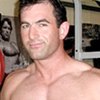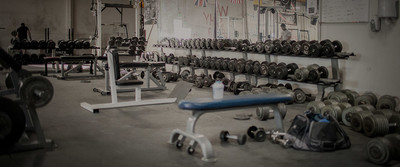Part 1 | Part 2 | Part 3 | Part 4
A massive number of memorable quotes can be attributed to Arnold Schwarzenegger or many of the characters he's portrayed, but none speaks to his passion for bodybuilding quite like this one: "The worst thing I can be is the same as everybody else."
Arnold had no interest in being ordinary, and his lifetime achievements bear that out. But to succeed in the gym and take his physique to heights no man had ever reached, Arnold had to be even more than extraordinary. He had to consistently commit to the bodybuilding lifestyle in action, thought, and vision.
Through interviews and articles he wrote for Joe Weider after coming to America in 1968, Arnold made clear that his formula for success had less to do with "secrets" and more to do with hard work, sweat, and an all-consuming drive to build muscle and achieve greatness. The most important ingredient for success, Arnold wrote, is self-confidence.
In this, the first of a four-part series that examines Arnold's rise in bodybuilding and details how he built his championship physique, we explore the eight training principles Arnold used to become seven-time Mr. Olympia and so much more. You'll discover that Arnold's approach was anything but ordinary and his bodybuilding success was by no means accidental.
1. Lifting Requires Brain Work, Too
Arnold understood and often wrote about the role of the brain in bodybuilding. When he trained, Arnold concentrated with 100 percent focus, which allowed him to reach even greater intensity levels. "The first step is to really believe that becoming massive is possible ... In the same way you can command your muscles to lift heavy weights when everything else suggests that you cannot, so you can mentally coax your muscles to grow larger and stronger."
Arnold's use of visualization techniques is well-known; he often imagined his biceps as big and peaked as mountains, and he harnessed that mental imagery to take his physique to unparalleled heights.
2. Train Harder Than Everybody Else
Arnold's goal was to be better than everyone, so he knew he had to train harder than everyone. In fact, when Arnold trained, the whole gym crowd often stopped and watched. Arnold just kept on training. Such was the intensity he channeled through his ability to connect his mind to each of the muscles he worked.
"The next step is to train very hard, concentrating on the basic movements. Rely on barbells and dumbbells instead of cables and machines," Arnold once said. For Arnold, training at anything less than 100 percent was a waste of time in the gym, but choosing the proper movements was also critical.
A Note on Arnold's Training Approach
Arnold's training schedule is considered high volume by today's standards. He did as many as 26 working sets on large muscle groups such as back, chest, and shoulders. And since he broke down the legs into the quads, hamstrings and calves, he frequently did as many as 61 sets on leg day. When asked if this approach was outdated, he replied, "It's what I used and what worked for me." Moreover, Arnold often trained each muscle group three times each week, hitting chest and back on Monday, Wednesday, and Friday mornings, and then legs later those same afternoons. Clearly that's too much volume and frequency for most trainees, but Arnold had the advantage of being a full-time bodybuilder who could spend the rest of his day eating and recuperating.
3. Choose the Right Exercises
The Oak didn't just train hard; he trained smart, too. "To get big, you have to get strong. Beginning and intermediate bodybuilders shouldn't be as concerned with refinement as with growth."
That meant focusing less on single-joint, isolation movements in favor of multi-joint exercises. The bench press, squat, deadlift, overhead press, bent-over row, and power clean are all examples of multi-joint exercises which require several muscle groups to work in coordination. While more difficult to master, they offer the added benefit of allowing you to train very heavy to overload the working muscle. Mastering these moves and challenging yourself with heavy weights, Arnold wrote, was the single-most critical component of gaining strength and size.
4. Use Heavy Weights for Low Reps
For Arnold, not only was choosing the right exercises important, but so too was choosing the right load. After all, a set of 8 reps while squatting with 365 pounds to failure elicits a far better muscle-building stimulus than a set of 135 pounds for 40 reps taken to failure. "Start with a few warm-ups [not taken to muscle failure] and pyramid the weight up from one set to the next, decreasing the reps and going to failure. Usually I'll have someone stand by to give me a just a little bit of help past a sticking point or cheat the weight up just a little."
For Arnold, while his concern was focused on feeling the weight, he wanted to make sure the load corresponded to muscle failure at a particular range.
"I make a point of never doing less than 6 repetitions per set with most movements, and nothing higher than 12. The rule applies to most body parts, including calves," Arnold said.
5. Vary Your Training
Arnold didn't need his business degree to know that diminishing returns applies to workouts, too. Do the same workout for too long without making significant changes and its value falls over time. That's when a bodybuilder finds himself in a rut.
"Within a basic framework, I was constantly changing my exercises. I liked to shock the muscles by not letting them get complacent in a constant routine."
Arnold did his homework when it came to planning his training sessions. If he found that an exercise was no longer producing gains, he'd switch it for another. Never afraid to experiment with new exercises or alternative training methods, Arnold was on a perpetual search for new ways to become bigger and better as old ways became stale.
6. Train for the Pump
Of the muscle pump, Arnold said, "If there is no muscle pump, there is no muscle growth." While Arnold famously proclaimed the pump to be as pleasurable as a sexual orgasm, he was definitely onto something when he took his sets past muscle failure and practiced tensing his muscles between sets and after workouts.
7. Prioritize Weaknesses
If you've got big pecs, it's only natural to want to show them off. As a result, you probably also give them a little extra effort in the gym. But Arnold took exactly the opposite approach. At one point, Arnold decided his calves had fallen behind the rest of his physique in overall development. Rather than hide the glaring weakness, he famously cut off the pant legs on his pants and wore shorts to constantly remind himself of his weakness and redouble his efforts to grow his calves. He trained calves more frequently, early in his workouts when he was fresh, and sometimes between sets for larger body parts.
8. Gain Knowledge and Use Your Instinct
Gain Knowledge and Use Your Instinct
"The way to success, in and out of bodybuilding, is having as much knowledge as possible," Arnold said. By seeking out information and experimenting with new approaches, you're better able to discern what works from what's a waste of time. Because each individual is unique, Mr. Olympia's training routine may not work best for you.
Today there are infinite ways to find information on the web, but the various resources competing for your attention can be confusing. Your best bet is to regularly check out Bodybuilding.com and its extensive library of articles for new ideas that relate to exercise selection, weights and loads, training volume, and setting up your splits. Try new ideas and incorporate those you like. Just like Arnold, you can experiment on your own physique.
Part 1 | Part 2 | Part 3 | Part 4
References
- FLEX Magazine (Australasian Edition): The Summer of Arnold. May/June 2007.
- Muscle & Fitness, July 1997: Arnold Talks Training, July 1997.
- Schwarzenegger, A. & Dobbins, B. (1999). The New Encyclopedia of Modern Bodybuilding. Simon and Shuster: USA.

